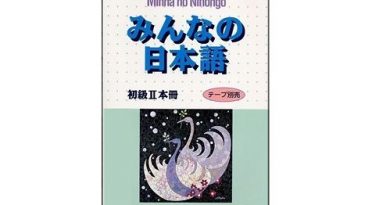Contents
Learn minna no nihongo lesson 8
3. Grammar
Adjective
– Definition: Adjectives are words that describe the nature, state, emotion … of things and people. They are used as predicates or modifiers to nouns.
– Classification: Based on the variation of Japanese adjectives, they are divided into two groups: adjective な and adjective い. (A な and A い)
+ A い : The adjectives ending with い
Example: さむい, むずかしい
+ A な : The remaining adjectives and the exception of adjectives い
Example: べんりな, ひまな, きれい、ゆうめい, …
NはAdj なです / NはAdjいです。
Meaning: N is/are (Adj)
Usage: Adjective is used to describe characteristics and states of things and events.
How to divide adjective forms:
* A い:
| A い | Past | Present and Future |
| Positive | Aかったです | Aいです |
| Negative | Aくなかったです | Aくないです |
A い:
+ In present and future sentences: With the positive form, we keep “い” of the Adj い . With the negative form, we remove “い” of the Adj い and add “くない”.
+ In past sentences: With the positive form, we remove “い” of the Adj い and add “かった”. With the negative form, we remove “い” of the Adj い and add “くなかった”.
Example:
| Past | Present and Future | |
| Positive | おもしろかった | おもしろい |
| Negative | おもしろくなかった | おもしろくない |
Exception
| Past | Present and Future | |
| Positive | よかった | いい |
| Negative | よくなかった | よくない |
* A な
| Aな | Past | Present and Future |
| Positive | Aでした | Aです |
| Negative | Aじゃありませんでした | Aじゃありません |
+ In present and future sentences: With the positive form, we remove “な” of the Adj な . With the negative form, we remove “な” of the Adj なand add “じゃありません”.
+ In past sentences: With the positive form, we remove “な” of the Adj な and add “でした”. With the negative form, we remove “な” of the Adj な and add “じゃありませんでした”.
Example:
| Past | Present and Future | |
| Positive | しんせつでした | しんせつです |
| Negative | しんせつじゃありませんでした | しんせつじゃありません |
Example:
山田(やまだ)先生(せんせい)は親切(しんせつ)です。
Yamada sensei wa shinsetsu desu.
Mr. Yamada is so kind.
富士山(ふじさん)は高い(たかい)です。
Fujisan wa takaidesu.
The Fuji Mountain is high.
あそこはしずかではありません。
Asoko wa shijika dewaarimasen.
That place is not quiet.
この本(ほん)は高く(たかく)ないです。
Kono hon wa takakunai desu.
This book is not expensive.
Adj い/な+ N
Usage: adjectives are placed before nouns to modify nouns
Example:
山田(やまだ)先生(せんせい)は親切(しんせつ)な先生(せんせい)です。
Yamada sensei wa shinsetsuna sensei desu.
Mr. Yamada is a kind teacher.
富士山(ふじさん)は高い(たかい)山(やま)です。
Fujisan wa takai yama desu.
The Fuji Mountain is a high mountain.
とても/あまり
[とても] and [あまり] are adverbs that indicate level. They are placed before adj to modify adj
[とても] is used in affirmative sentences, and means “very”
Example:
これ は とても ゆうめいな えいがです。
Kore wa totemo yumeina eiga desu.
This is a very famous movie.
[あまり]
Used in negative sentences, meaning “not ~ very”
Example:
シャンハイ は あまり さむくないです。
ShanHai wa amari samukunaidesu.
Shanghai is not very cold.
Nはどうですか。
Meaning: How is the thing?
Usage: Ask about someone’s impressions, opinions, feelings about what they have done, about a place that they have come or a person whom they have met.
Example:
A: 日本(にっぽん)の生活(せいかつ)はどうですか。
Nippon no seikatsu wa dou desuka.
How is life in Japan?
B: 楽しい(たのしい)です。
Tanoshii desu.
It’s fun.
Kono shukudai wa doudesuka.
How Is This Exercise?
Totemo muzukashii desu.
Very difficult.
N1はどんなN2 ですか。
Usage: Use when the speaker wants the listener to describe or explain the object in N1. N1 belongs to N2. The question word どんな always stand before nouns.
Example:
A: 奈良(なら)はどんな町(まち)ですか。
Nara wa donna machi desuka.
What kind of city is Nara?
B: 古い(ふるい)町(まち)です。
Furui machi desu.
It’s an old city.
Fujisan wa donna yama desuka.
What kind of mountain is the Fuji mountain?
Yuumeina yama desu.
clause 1 が、clause 2.
Meaning: clause 1 but clause 2
Usage: The particle “が” is placed between two clauses to connect two clauses that have non-identical meaning.
Example:
日本(にっぽん)の食べ物(たべもの)はおいしいですが、たかいです。
Nippon no tabemono wa oishii desu ga, takai desu.
Japanese food is delicious but expensive.
このおちゃはたかいですが、おいしいです。
Kono ocha wa takai desu ga, oishii desu.
This tea is expensive but delicious.
どれ
Meaning: Which
Usage: ask the listener to choose an object from two or more objects that are mentioned.
Example:
砂糖(さとう)さんの傘(かさ)はどれですか。
Which is Mr. Satou’s umbrella?
青い(あおい)傘(かさ)です。
It is a blue umbrella.
4. Kaiwa
そろそろ 失礼します
Sorosoro shitsureishimasu
山田一郎 : マリアさんはもう日本の生活に慣れましたか。
Yamada Ichirou : Maria san wa mou Nihon no seikatsu ni naremashita ka.
マリア・サントス:ええ。毎日とても楽しいです。
Marina. Santosu : Ee. Mainichi totemo tanoshiidesu.
山田一郎 : そうですか。サントスさん、お仕事はどうですか。
Yamada Ichirou : Soudesu ka. Santosu san, oshigoto wa doudesu ka.
ホセ・サントス : そうですね。忙しいですが、おもしろいです
Hose. Santosu : Soudesu ne. Isogashiidesuga, omoshiroidesu
山田友子 : コーヒー、もう一杯いかがですか。
Yamada Tomoko : Kouhii, mou ippai ikagadesuka.
マリア・サントス:いいえ、けっこうです。
Marina. Santosu : Iie, kekkou desu.
ホセ・サントス : あ、もう8時ですね。そろそろ失礼します。
Hose. Santosu : A, mou 8-jidesu ne. Sorosoro shitsureishimasu.
山田一郎 : そうですか。
Yamada Ichirou: Soudesuka.
マリア・サントス:きょうはどうもありがとうございました。
Marina. Santosu : Kyou wa doumo arigatougozaimashita.
山田友子 : いいえ。またいらっしゃってください。
Yamada Tomoko : Iie. Mata irasshatte kudasai.
Translation:
It’s time to leave.
Yamada Ichirou: Have you got used to life in Japan?
Maria Santosu: Yes. Every day is very happy.
Yamada Ichirou: Really? Mr. Santos, how is your job?
Hose Santosu: Let me see. It’s busy but interesting.
……………………………………………………………………………….
Yamada Tomoko: Would you like another cup of coffee?
Maria Santosu: No, that’s enough.
……………………………………………………………………………….
Hose Santosu: Ah, it’s already 8 o’clock. It’s time for me to return.
Yamada Ichirou: Is that so.
Maria Santosu: Thank you very much today.
Yamada Tomoko: You’re welcome. Please come again.
Please see the renshuu section on the next page.


need a video with every lesson as it is easy to learn
it would be even more helpful if you could add the answers in romaji as well.
oki Janhvi, we’ll add romaji in answers 🙂